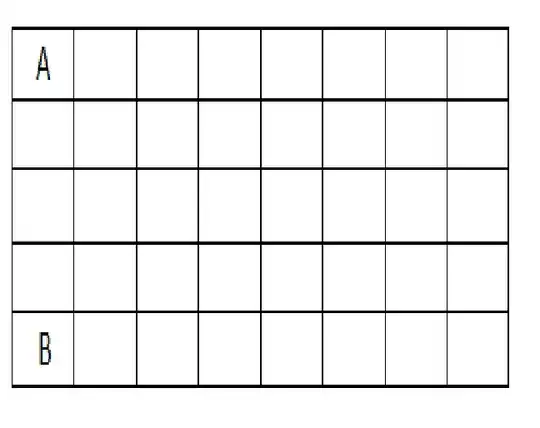Example 1:
This question never fails to confuse non-mathematicians. It is pretty good at confusing even beginner math students, people who were "good" at math in high school.
You have a summer vacation home by a lake and through the back window you can only see exactly one-half of the lake. One summer, some algae starts growing on the surface of the lake where you can't see it from the window. The surface area of the algae doubles every day such that in thirty days it will cover the entire lake. How many days before you'll see the algae through your window?
The unstated assumption is that I am asking for the worst case scenario so the algae starts at the point furthest away from the visible part of the lake. The solution is:
You will not the see the algae until day 29.
People are shocked and amazed because people love linear relationships and just assume linear relationships by default. In this case, I tell them it is doubling everyday so it is a geometric relationship but everyone still says something like 15 days. Or sometimes they realize it is a "trick" question and the answer can't be as obvious as 15 so it is 14 or 16 or something. Anyone who is decently trained to listen carefully and think critically should get this after about five seconds.
I always use this example whenever I am talking about exponential growth/decay, especially when I am explaining global warming, population growth, depletion of resources, polar ice caps melting, etc. The moral of the story is, sometimes we will simply not even see the problem until it is too late.
Example 2:
Another category which always confuses the general public is percentages. I have managed to confuse small business-owners, cashiers, and salesmen who deal with buying, selling, discounts, taxes, sales, markups, growth rates, profits, and losses every single day. The biggest shock for me was someone who had been in business for more than a decade. He was confused and couldn't give me a correct answer despite repeated attempts, with a calculator.
You walk into a store and purchase an item. The total at the counter, including sales tax, was \$100. The sales tax rate is 10%. What was the tag price of the item on the shelf?
The cultural assumption is that the displayed tag price of the item doesn't include the sales tax so sales tax is added at the counter. I know that different parts of the world have different norms but this is how it is done in the USA.
Inevitably the first, and the intuitive, answer is always \$90. Then I point out that \$90 plus 10% gives you \$99 so that cannot be the correct answer. After the shock and the amazement, they think I am bamboozling them with the language. I point out that it is a straightforward, simple, and short question. It is not a trick question. They always ask me to repeat and they listen super carefully the second time. Then the (cop-out) answer is that "oh, it is just a bit more than \$90". I say yes but can you tell me exactly what it is. Then they grab a calculator and start incrementally increasing \$90 and adding ten percent to it until they get \$100. Some are quick enough to use a bisection-method-variant to quickly hone in on the correct amount in a couple of tries.
Anyone who remembers beginner algebra should quickly setup the equation $x+0.1x=100$ and get the original tag price to be \$ 90$\frac{10}{11} \approx \$90.91 $. This results in the total amount being \$100 to two decimal places.
The problem here is of course, that people always assume 10% of the final amount, which is \$100. We don't want that. The sales tax is calculated on the tag price and then added to get the final price. The final price should be divided by 1.1 instead of multiplied by 0.9. The reciprocal of 1.1 is not 0.9. Adding ten percent of a quantity and then subtracting ten percent of the sum will not give you the original quantity. You will subtract a tiny bit more than you should.
Sure, for a mathematician this is not mathematics. It is just arithmetic. But for the general public this is indeed "math".
Example 3:
Another one, which I always give as extra credit, confuses even advanced undergrads.
Give me two numbers which add up to ten and multiply out to a hundred.
The unspoken rule here is that don't assume numbers to be the integers only, positive or otherwise. This is a super short, easy to understand question.
Everyone starts with thinking something like ten times ten is a hundred but ten plus ten is twenty. Okay, not quite, but the answer should be close enough to ten and ten. Maybe something like eleven and nine. Then they start increasing one, decreasing the other. Some people start systematically writing tables. But of course, there is no solution in the integers.
A mathematician, after trying a few integers as above, should setup the system,
\begin{array}{cr}
x+y&=&10\\
xy&=&100
\end{array}
obtaining the equation $x^2-10x+100=0$ which gives you
\begin{array}{cl}
x&=&5+i\sqrt{75}\\
y&=&5-i\sqrt{75}.
\end{array}
These indeed add up to ten and multiply out to one hundred but they just happen to be complex numbers.
The problem here is the "number" assumption. Upon hearing the word "number" everyone assumes that "number" means a positive integer. A mathematician should always think about the assumptions that the question or the answer statement assumes. Okay so maybe this is a "trick" question. A bit disingenuous to ask the general public but math undergrads should always get this. It is my favorite extra credit problem to give.

Milkisnot Milk. Though it really is just as correct without the quoting. – RBarryYoung Mar 01 '18 at 13:57